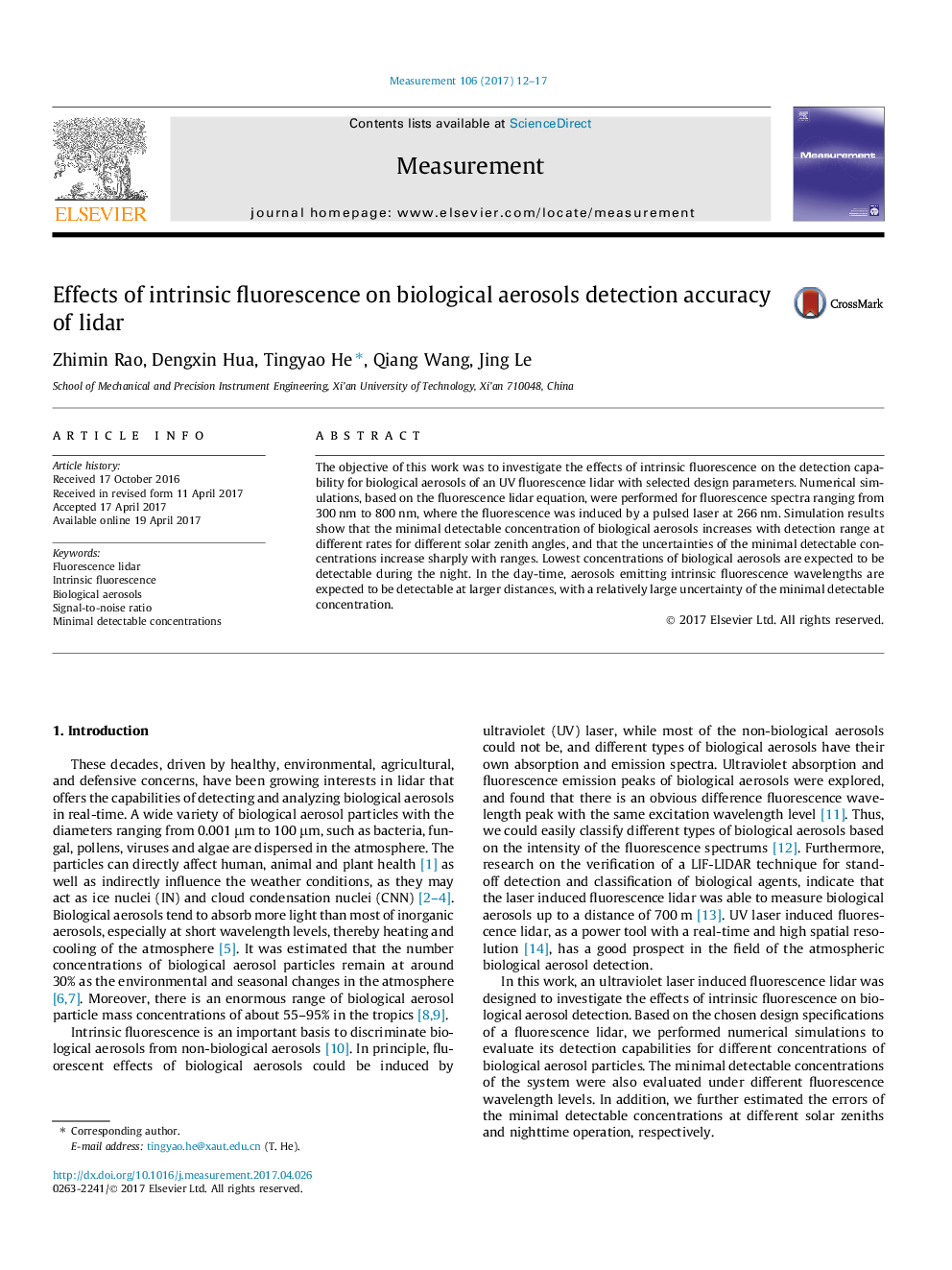| Article ID | Journal | Published Year | Pages | File Type |
|---|---|---|---|---|
| 5006587 | Measurement | 2017 | 6 Pages |
Abstract
The objective of this work was to investigate the effects of intrinsic fluorescence on the detection capability for biological aerosols of an UV fluorescence lidar with selected design parameters. Numerical simulations, based on the fluorescence lidar equation, were performed for fluorescence spectra ranging from 300Â nm to 800Â nm, where the fluorescence was induced by a pulsed laser at 266Â nm. Simulation results show that the minimal detectable concentration of biological aerosols increases with detection range at different rates for different solar zenith angles, and that the uncertainties of the minimal detectable concentrations increase sharply with ranges. Lowest concentrations of biological aerosols are expected to be detectable during the night. In the day-time, aerosols emitting intrinsic fluorescence wavelengths are expected to be detectable at larger distances, with a relatively large uncertainty of the minimal detectable concentration.
Related Topics
Physical Sciences and Engineering
Engineering
Control and Systems Engineering
Authors
Zhimin Rao, Dengxin Hua, Tingyao He, Qiang Wang, Jing Le,
